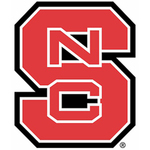Colorado State University
Profile
Size
10 / 10Cost
4 / 10Selectivity
2 / 10-
Team Conference
MCLA Div. 1
-
College Type
4-year, Public
-
Campus Type

City: Medium
Student Body
Gender
- Male
- Female
Enrollment
- Full Time
- Part Time
Geography
- In-State
- Out-of-state
- Foreign
- Other
Ethnicity
- White
- Black
- Asian
- Latino
- Foreign
- Other
Other includes American Indian, Native Alaskan, Native Hawaiian or other Pacific Islander, two or more races and unknown race / ethnicity.
Coach's Description
As a “virtual varsity” program, the lacrosse team needs a solid foundation inside the university. Sport Clubs recognizes lacrosse as a major sport now, and supplies the team with whatever is possible.
Coach Recruiting Interview
When you think of lacrosse championships in the state of Colorado, you think the Colorado State Rams. The Rams have brought 6 MCLA national titles to Fort Collins, growing the game in the Centennial State.
We caught up with head coach Alex Smith and learned some of his recruiting advice for high school athletes interested in taking their skills to the MCLA. Coach Smith is a great example for showing young lacrosse players that the NCAA is not the only college lacrosse level to excel their game, being the first MCLA player to play in the MLL for the Denver Outlaws.The Rams had another standout season in 2014 with a 12-6 season in arguably the toughest conference in the land, the RMLC. Coach Smith has had players hail from the likes of Minnesota, New York, Pennsylvania, California, Washington, Illinois, Utah, Maryland and Tennessee to combine with the strong Colorado core.
What advice do you have for players interested in MCLA programs?
Do your research. Lacrosse at all levels of college is about finding the right fit – academically, socially and athletically. You have to make a choice about college with the thought that you will be spending the next 4-5 years there. Lacrosse is only part of the puzzle. The good thing about the MCLA is you can find a great program at the school you want to attend.
What is the best way for players to get on your recruiting radar?
Players can message us through our college profile on ConnectLAX. Fill our our recruiting form at www.csulacrosse.com/recruits and then schedule a trip to CSU or our camp to really check things out.
What type of player’s do you primarily look for, a raw athlete or refined lacrosse player?
We want people who really want to be a part of our program. We do not beg players to come. We do not make cuts, but we do not make promises, so we want people who really want to be Rams.
What areas of player development would you recommend players to focus on?
Family, academics, lacrosse. Those are the big 3 areas that you need to be great in.
What type of student-athletes find MCLA programs to be the best fit for them?
Tough to answer this question. We get all kinds – under or non-recruited players, players who were recruited by DI, II, or III teams that decided against that route for any number of reasons, players who transfer back “home” after going out east for lacrosse. There is no way to pigeon hole the type of player that ends up in the MCLA or at CSU. It takes all kinds.
Team Road Trips
Most away trips for Colorado State are scheduled for Colorado and the California area, which includes Stanford, Novato and Palm Desert. The team has traveled to Boise, Idaho and Provo, Utah, to play divisional games against Utah, BYU and Boise State. Colorado plays Colorado State in a rivalry game every year in the Mile High Stadium in Denver, CO.
Recruit Commits
2022 | |||
Hometown |
Position(s) | ||
| Brandon Montoya |

|
Colorado Springs, CO | Def, LSM |
2021 | |||
Hometown |
Position(s) | ||
| Matthew Dowden |

|
Wayzata/Benilde St. Margarets, MN | Att, Mid |
Location
Team Videos
Where Grads Live
- Greater Denver Area
- Fort Collins Colorado Area
- Colorado Springs Colorado Area
- San Francisco Bay Area
- Greater Los Angeles Area
- Greater New York City Area
- Greater Seattle Area
- Washington D.C. Metro Area
- Greater Chicago Area
- Phoenix Arizona Area
- Grand Junction Colorado Area
- Dallas/Fort Worth Area
- Greater San Diego Area
- Portland Oregon Area
- Greater Boston Area
Where Grads Work
- Hewlett-Packard
- United States Air Force
- Lockheed Martin
- Oracle
- IBM
- State of Colorado
- Wells Fargo
- City of Fort Collins
- US Army
- Poudre School District
- US Forest Service
- Front Range Community College
- Microsoft
- Level Three Communications
- Intel Corporation
What Grads Do
- Sales
- Operations
- Entrepreneurship
- Education
- Engineering
- Research
- Information Technology
- Program and Project Management
- Healthcare Services
- Finance
- Consulting
- Marketing
- Media and Communication
- Support
- Arts and Design
Niche Grades
Overall Experience

Student Life

Professor Rating

Academics

Athletics

Campus

Academics
Test Scores
This range represents the middle half of incoming freshman from the 25th to 75th percentile. The writing component is now optional and no longer reported.
This distribution represents incoming freshman test scores and GPA on 4.0 scale.
Admissions
Total |
Male | Female | |
| Applicants | 28,319 | 11,842 | 16,477 |
| % Admitted | 81% | 80% | 83% |
| % Admits That Enroll | 23% | 24% | 22% |
| Incoming Freshman Average GPA | 3.61 |
Admission Considerations
Required | Rec. | |
|---|---|---|
| High School GPA | ||
| High School Rank | ||
| High School Transcript | ||
| College Prep Classes | ||
| Recommendations | ||
| Demonstrate Competencies | ||
| Admission Test Scores | ||
| Other Tests (Wonderlic, etc.) | ||
| TOEFL (English proficiency) |
 Admissions office
Admissions office
Majors / Programs
Degrees offered by popularity. Type = Bachelor.
 Athlete graduation rate
Athlete graduation rate
Financial
Net Price
Average net price = sticker price - financial aid.
$16,793
Average net price by income for incoming freshman receiving financial aid.
Net price for students paying in-state tuition rate (public institutions).
Sticker Price
Sticker price = estimated total cost of attendance.
In-state | Out-of-state | |
On Campus | ||
| Tuition & Fees | $11,901 | $28,346 |
| Books & Supplies | $1,200 | $1,200 |
| Cost of Living | $12,430 | $12,430 |
| Personal Expenses | $1,404 | $1,404 |
| Sticker Price | $26,935 | $42,016 |
Personal expenses includes laundry, transportation, entertainment and furnishings.
Financial Aid
79% of full-time, incoming freshman receive financial aid.
Receiving Aid % | Avg. Aid Amount | |
Type of Aid | ||
| Grant or Scholarship | 63% | $9,161 |
| Federal Grants | 21% | $5,300 |
| Pell Grants | 21% | $4,583 |
| Other Federal | 15% | $1,081 |
| State & Local Grants | 19% | $3,372 |
| Institutional Grants | 56% | $7,112 |
| Student Loans | 41% | $7,601 |
| Federal Loans | 40% | $5,189 |
| Other Loans | 6% | $18,494 |
All financials shown for full-time, incoming freshman.
Total Amount | Per Student | |
Endowment | ||
| Financial Assets | $371 Million | $11,086 |
Value of endowment assets at fiscal year end.
Debt
Total federal debt after graduation for undergrad borrowers: $20,502.
Total cumulative student debt by percentile.
Total Principal | Monthly Payment | |
| 10 Year Repayment | $15,000 | $218 |
Most student loans have a grace period before repayment begins.
3 Year Avg. Default Rate: 3.0%
Avg. rate for colleges with lacrosse is 5.1%.
Total federal debt excludes private student loans and parent PLUS loans. Cumulative debt cohort includes 9,270 students.
Salary
Earnings 10 years after enrollment: $47,100
Earnings of former students working by percentile.
Earnings of former students who received federal financial aid. Figures shown are median.
Payback
How long until this college investment pays off: 5.04 years.
Median debt and foregone earnings divided by median earnings. Foregone earnings assumes 4 years to graduation; at this school, 45% of students graduate on time.
Team Social
Campus Safety
On Campus |
In Res. Halls |
|
|---|---|---|
Criminal Offenses |
||
| Murder | - | - |
| Negligent Manslaughter | - | - |
| Rape | 13 | 13 |
| Fondling | 10 | 9 |
| Incest | - | - |
| Statutory Rape | - | - |
| Robbery | - | - |
| Aggravated Assault | 1 | 1 |
| Burglary | 15 | 14 |
| Motor Vehicle Theft | 4 | 4 |
| Arson | 5 | 5 |
In Residence Halls are a subset of On Campus statistics. Murder includes non-negligent manslaughter.
The crime data reported by the institutions have not been subjected to independent verification by the U.S. Department of Education. Therefore, the Department cannot vouch for the accuracy of the data reported here. Statistics represent 3-year average data.
Data from The National Center for Education Statistics (NCES), the primary federal entity for collecting and analyzing data related to education.
Carnegie Classifications
Category |
Classification |
|---|---|
| Basic Classification | Doctoral Universities: Highest Research Activity |
| Undergrad Instruction | Balanced arts & sciences/professions, high graduate coexistence |
| Graduate Instruction | Research Doctoral: Comprehensive programs, with medical/veterinary school |
| Enrollment Profile | High undergraduate |
| Undergrad Profile | Four-year, full-time, more selective, higher transfer-in |
| Size and Setting | Four-year, large, primarily residential |
Carnegie classifications provide a framework for evaluating comparable schools.
Similar Academic Schools
-

-

-

-

-

-

-

-

-

-

-

-

-

-

-

-

-

-

-

-

-

-

-

-

-

 See more college grades
See more college grades Free ACT and SAT test prep
Free ACT and SAT test prep Free SAT test prep
Free SAT test prep Free scholarship search
Free scholarship search